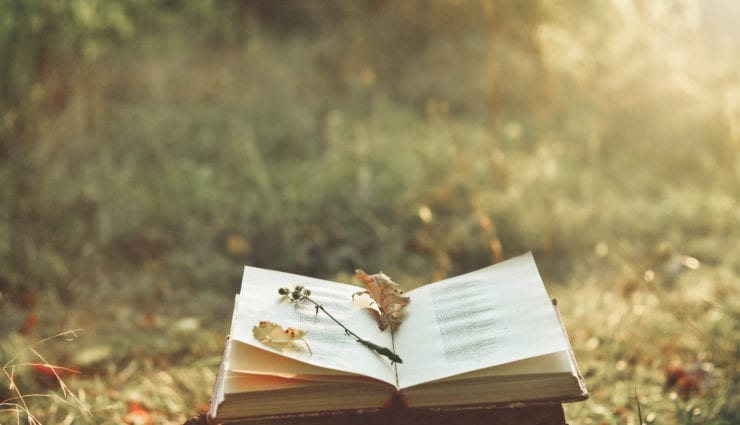04/01/2019 by Carney Sandoe Staff |
Education News and Trends
Mary Oliver and the Art of Creativity

We were recently in a used bookstore where the owner said he sells more poetry books than novels. He thinks the reason is that people tend to read novels once and move on. But with poetry, many of us return to favorite poets or explore new ones of any generation — from Homer to Shakespeare to Rita Dove. Few read a poetry book cover to cover. Instead we dip in and out — reading for artistic and emotional connection. For the joy and consolation found there.
This observation holds true in our experience. And one of the poets we (and, clearly, many others) return to often is Mary Oliver. Oliver, among the most successful poets of her generation, died earlier this year at the age of 83 — and many of her readers have mourned her passing the way one might a rock star. This doesn’t happen often with poets. But Oliver has been such an important force in the world. For her writing, she won the Pulitzer Prize, the National Book Award, the PEN New England Award, and more. In all, she published 23 volumes of poetry and seven volumes of prose.
Since this is National Poetry Month, we thought we’d look back on some of Oliver’s work, especially her thoughts on writing and the creative life.
These days, schools talk often about the importance of students developing their creative capacities. It sounds wonderful. But it raises questions about what exactly this means — and about what schools can actually do to support and nurture creativity. As it turns out, Oliver addresses this question in her poetry, as well as in “A Poetry Handbook” and in her last collection of essays, “Upstream.”
In “A Poetry Handbook,” Oliver, like other writers, makes it clear that creativity is not about waiting for inspiration to strike. It’s about hard work and a commitment to the process of writing — or to any other creative activity. You show up each day, patiently, diligently. You show up not with worry, but with attentiveness and trust.
In the “Handbook,” she outlines what it takes to create poetry. It starts with reading, of course — reading a great deal of poetry and other literature. When one begins to write, it’s good to imitate writers, as a way to understand. But in time, one must develop one’s own voice. To that end, Oliver underscores the importance of paying attention to the sound of words, alone and together. She insists that we be conscious of our lines, the meter, the rhymes, the breaks, the visual look on the page, the intent. We need to understand form and how it works — and play with form and free verse, or mix the two. Consider diction, tone, voice, point of view, the strength of imagery, and so on.
In short, she encourages all young writers to pay deep and careful attention to craft.
In addition, Oliver is very clear about the need for writers to pay close, reverential attention to the world. Themes and images will come from this attention, she says. We’ll make the connections, find the metaphors. This blend of reverential attention to the world around us and to the craft of writing is how one turns expressions into art.
This is creativity.
“A mind that is lively and inquiring, compassionate, curious, angry, full of music, full of feeling, is a mind full of possible poetry,” Oliver concludes. “Poetry is a life-cherishing force. And it requires a vision — a faith, to use an old-fashioned term. Yes, indeed. For poems are not words, after all, but fires for the cold, ropes let down to the lost, something as necessary as bread in the pockets of the hungry.”
In her last published collection of essays, “Upstream,” Oliver digs deeper into matters of creativity and creative writing — about the need for showing up, resisting interruptions, and keeping one’s heart and mind open to possibility.
The book is full of wonderful observations on the art of poetry and the art of living. One passage stands out for us — summing up what drives Oliver and other poets, and keeps us reading:
“No one yet has made a list of places where the extraordinary may happen and where it may not. Still, there are indications. Among crowds, in drawing rooms, among easements and comforts and pleasures, it is seldom seen. It likes the out-of-doors. It likes the concentrating mind. It likes solitude. It is more likely to stick to the risk-taker than the ticket-taker. It isn’t that it would disparage comforts, or the set routines of the world, but that its concern is directed to another place. Its concern is the edge, and the making of a form out of the formlessness that is beyond the edge.”
This latter point — about making form out of the formlessness — reminds us of what great teachers do every day in guiding children on their 16-year journey through school to adulthood. In her essay, “Upstream,” Oliver asks, “Do you think there is anything not attached by its unbreakable cord to everything else?”
She also writes, “Teach the children…. Attention is the beginning of devotion.”
Reading Assignment:
Here are links to a few favorite poems (in Poetry magazine) by Mary Oliver and two other poets we’ve long admired and sadly lost this past year.
Mary Oliver — “Breakage” “Forty Years”
W.S. Merwin — “Good People” “Native Trees”
Donald Hall — “At Eagle Pond” “Maple Syrup”
Leave a Comment
0 Comments
There are no comments on this blog entry.